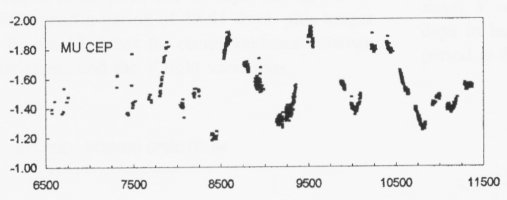
 |
Mu Cephei varies by nearly a magnitude with a semi-regular period of 800-1000 days. The visual magnitude scale on the left is relative only. The lower axis gives the Julian Day number (2440000+number given), which is a running count since January 1, 4713 BC on the Julian calendar. The dates span March 10, 1986 to November 11, 1999. (From J. R. Percy, J. B. Wilson, and G. W. Henry, Publ. Astr. Pacific vol. 113, p. 983, 2001.) |